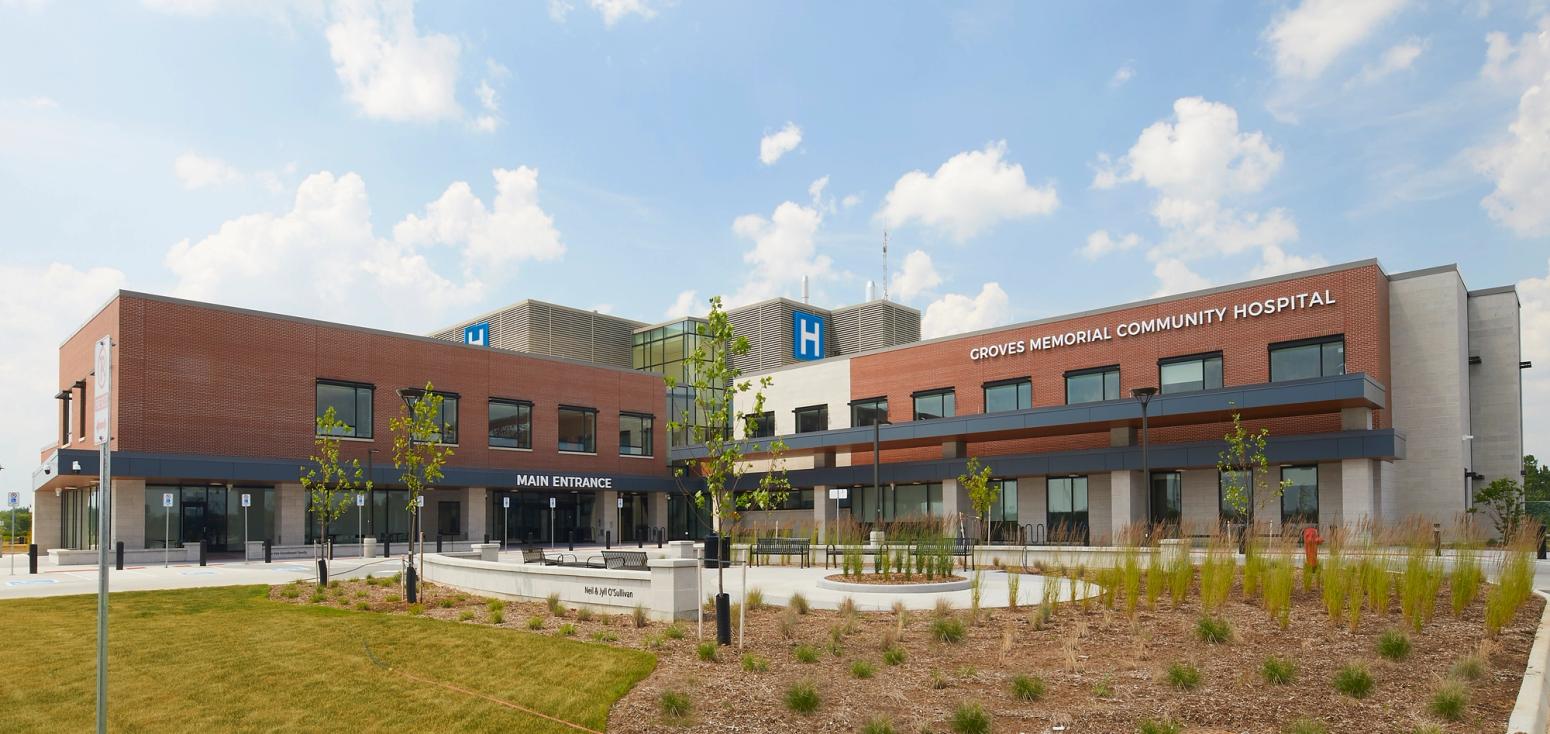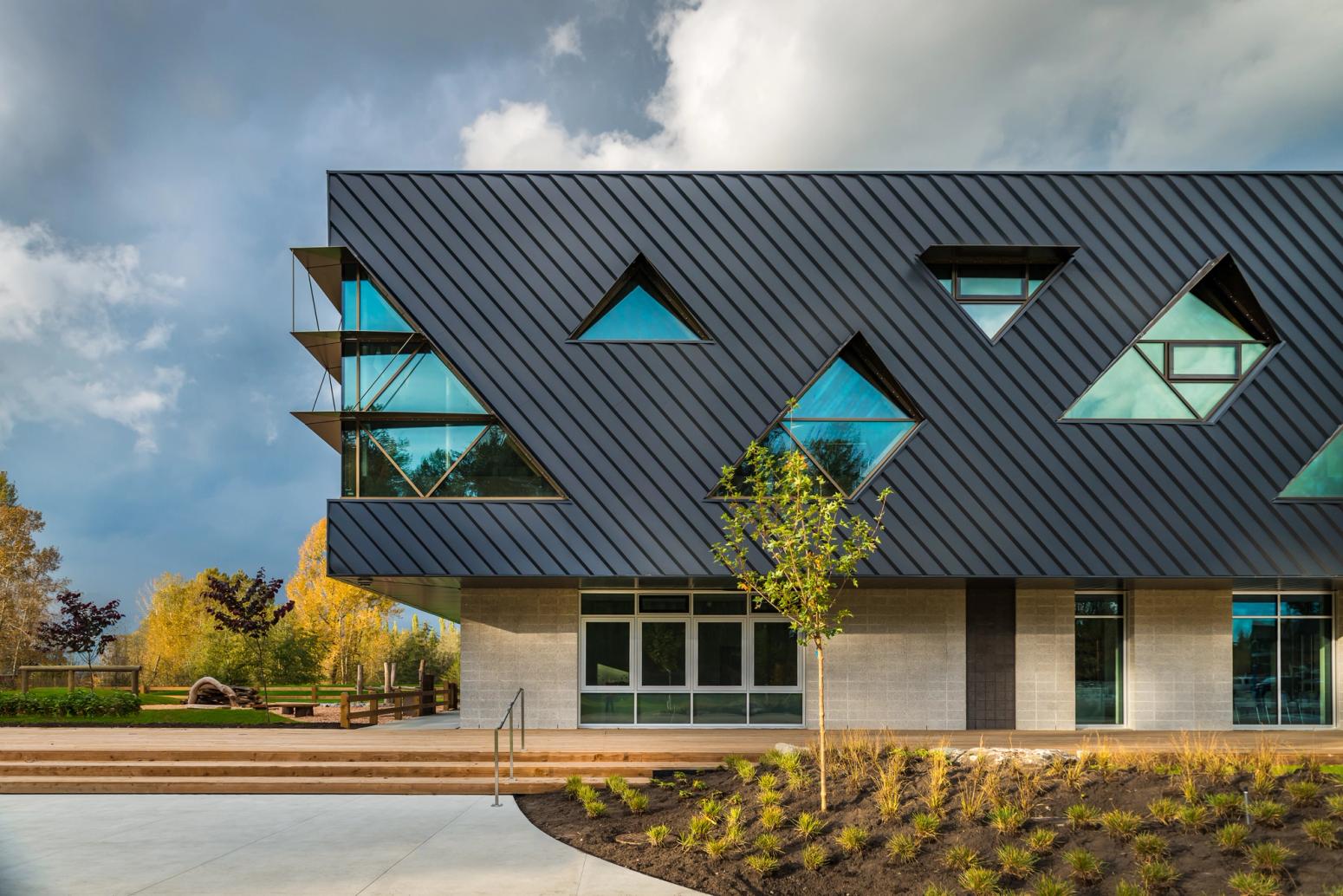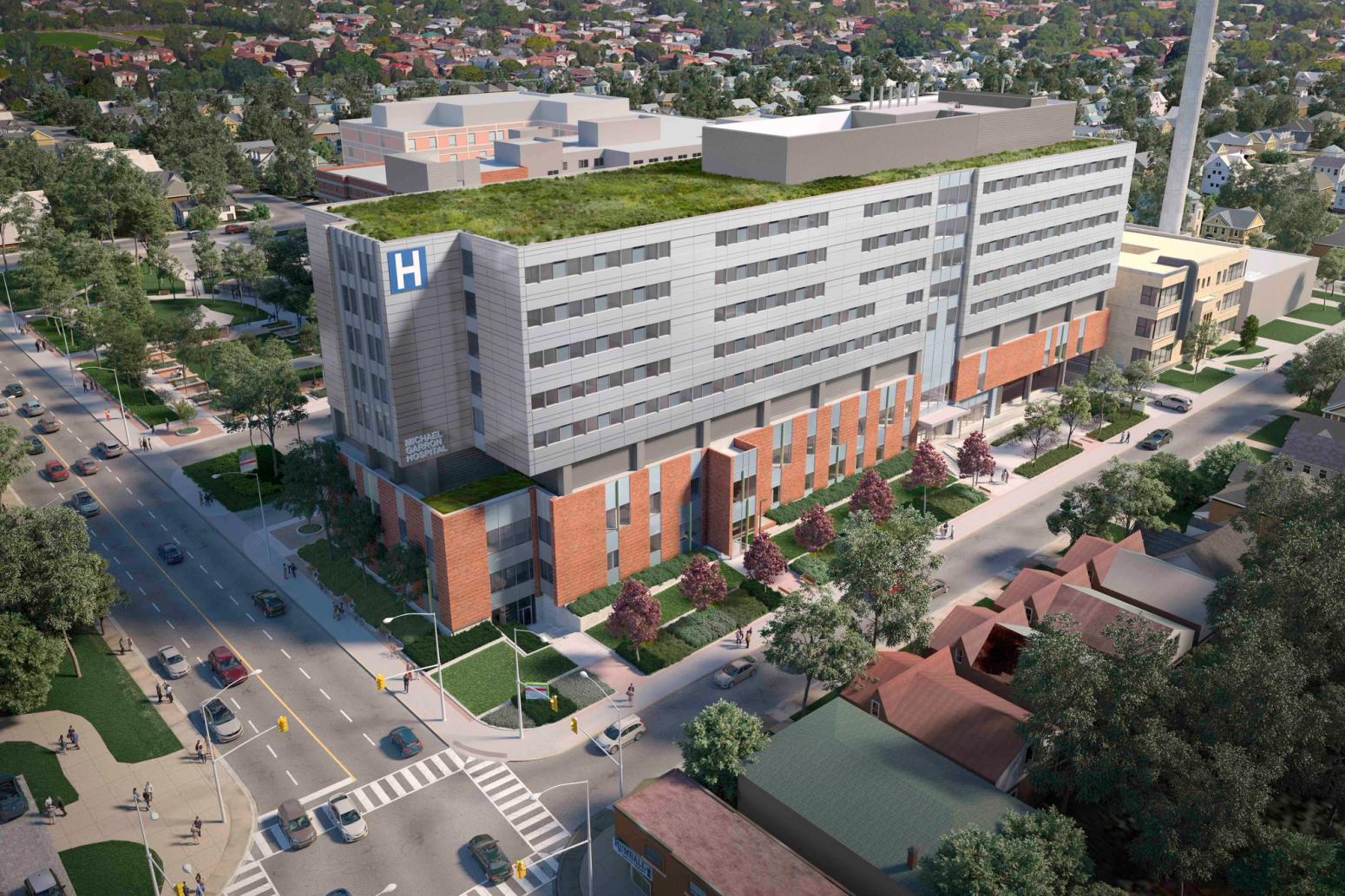Jun 27, 2020
Spotlight
Groves Memorial Community Hospital
Client: Groves Memorial Hospital
Location: Fergus, Ontario
Delivery Model: Design-Build-Finance
Size: 135, 840 sq. ft.
Value: N/A
Project Highlights
- First IntegratED project
- Designed to achieve LEEDⓇ Silver Certification
The Groves Memorial Community Hospital project involved the construction of a 45-bed facility that would include more space for emergency, ambulatory, diagnostic, and inpatient services as well as private, single-patient rooms and rooms with washrooms and showers. The new hospital features modernized infection control measures, including additional isolation facilities for any potential pandemic or disease outbreaks, with an onsite helipad to allow fast access for patient transfers by air ambulance. The Energy & Digital Services team provided a variety of services, including:
- Communications: audio-video system infrastructure only.
- Communication: complete voice and data system, including cabling and equipment.
- Communications: special communication systems.
- Electronic safety and security: complete security systems, including cabling and equipment.
- Electronic safety and security: fire alarm system.
IntegratED
Since its earliest days, EllisDon has successfully completed hospital construction. We know the only thing more complicated than a hospital’s structure are the systems the staff use to go about their vital work. As such, we place special importance on any feasible solution that can bring efficiencies to hospitals, whether in their construction or in their operation—and preferably both.
Diagnosing Room for Improvement
Hospitals run on life-saving efficiency. From vital color-coded calls (i.e. a Code Blue) to alerts of patient duress to the location of essential equipment or the need for immediate maintenance, all alerts must be communicated to hospital staff before action can be taken.
In most cases, a typical alarm-management platform uses analog technology to send alarm codes or patient requests to one central place, often a desk, where staff then send the code or requests on to their next destination. Despite decades-old technology being competent enough to get this done, there are inefficiencies, even human errors, at play in this process. A very practical example, and the one most requested by nurses to be addressed, is the ability to avoid duplication of alerts so multiple nurses don’t drop what they’re doing to address a one-person problem.
Through extensive work on various P3 hospitals, EllisDon’s Energy and Digital Services (E&DS) team realised the alert system needed improvement. We noticed an exponential increase in costs for alert systems as vendors struggled to integrate old technology with new and more complex requests. Each new project agreement required (and continues to require) an increased level of integration between disparate hospital systems, resulting in technical challenges that aren’t easy to overcome.
Putting Together a Solution
One of the key attributes the E&DS team has is a deep understanding of system integration, alarm management, workflows, and use-case development within healthcare. Using this knowledge, they searched the market for a technology solution that was highly flexible to client needs. EllisDon partnered with Intellect Dynamics, a user experience (UX) developer and systems integrator, who would provide the foundation of the integration platform while E&DS would supply the product development, deployment, and healthcare expertise.
Initially, Groves Memorial Community Hospital was opposed to a new approach. They were concerned about the criticality of the platform and feared that a company known mostly for its construction expertise would not be able to deliver a viable solution.
“We were the flagship site for the product, so there was hesitation primarily because hospitals don’t get into the business of industry-leading technology. Normally, we’ll find the best product solution and implement it but being on the leading edge of technology isn’t a priority,” said Cam Yates, Vice President of Support Services, CIO, Groves Memorial Community Hospital.
The E&DS team made a strong case for a new system, and through the implementation process, the hospital began to understand the power and flexibility it could offer.
“Our previous system was very old technology, very analog and it was therefore difficult to realize efficiencies because the system could only do so much. Implementing IntegratED gave us the opportunity to rethink and redesign many of our workflows because now the technology could keep pace and actually align our care delivery workflows to our patient safety and experience goals,” said Rebecca Stuart, Director of Quality and Patient Safety, Groves Memorial Community Hospital.
How it Works
The E&DS team knew the platform had to deliver in several major ways for it to be feasible. It had to be web-based and mobile, it had to provide secure and interactive messaging, it had to be multilingual and customizable, and it couldn’t have a maximum number of workflows or concurrent users. Those were the must-haves, which didn’t even include some of the more technical parameters necessary to provide adequate flexibility like a full HL7 engine, context awareness, unlimited data points, support of Unified Information Access, advanced business rules logic, no interface development required when integrating, and so on. The final product delivers on all of these parameters and more.
This mobile access is the most visible innovation of the IntegratED alert system, allowing two-way communication. “What is the problem? What is the priority? Where is it? I’m on it, consider someone en route,” all on mobile and all tailored to the hospital’s own parameters and settings. These are the crucial moments, perhaps the most crucial, where efficiency is critical.
The system also allows for an alert or workflow to trigger multiple other alarms and events if necessary. For example, if the Fire Alarm System or Nurse Call System is sending smoke alarms, IntegratED will identify and trigger the events necessary for that specific alarm based on context. Since IntegratED is not a scripted system, it isn’t limited to just presenting alarms but has the ability to implement real orchestration where it connects groups, systems, events, or any other disparate system that otherwise cannot communicate with one another. The product has the ability to create dynamic workflows where the next steps depend on the previous outcome.
Future Feasibility and Added Benefits
While the IntegratED system was built to address current procedural and financial inefficiencies, it was also designed to grow with the industry. Being adaptive to a hospital’s workflows and operations means it can be used for future data and analytics, providing key insights down the road. The system was also built to support AI, meaning it can eventually be made to offer up solutions based on previous decisions by users. These kinds of predictive and statistical analytics are already part of the platform.
Current Application
The benefits of IntegratED became strongly apparent during the global COVID-19 pandemic, as the accessibility of PPE became a crucial part of each staff member’s daily life. The ability of staff members to rapidly assess patient needs through technology enabled the staff to carry on with their vital responsibilities with minimal disruption.
“PPE conservation is so important during the pandemic, and being able to speak to patients through the handheld when they call allows the nurse to assess and prioritize their response without having to garb up in PPE just to enter the room to identify what the patient needs,” explained Stuart.
Technology is shaping the future of medicine. The success of IntegratED at Groves Memorial Community Hospital sets the stage to solve operational challenges through technology and clearly positions EllisDon as a leader in technology and intelligent building solutions.






